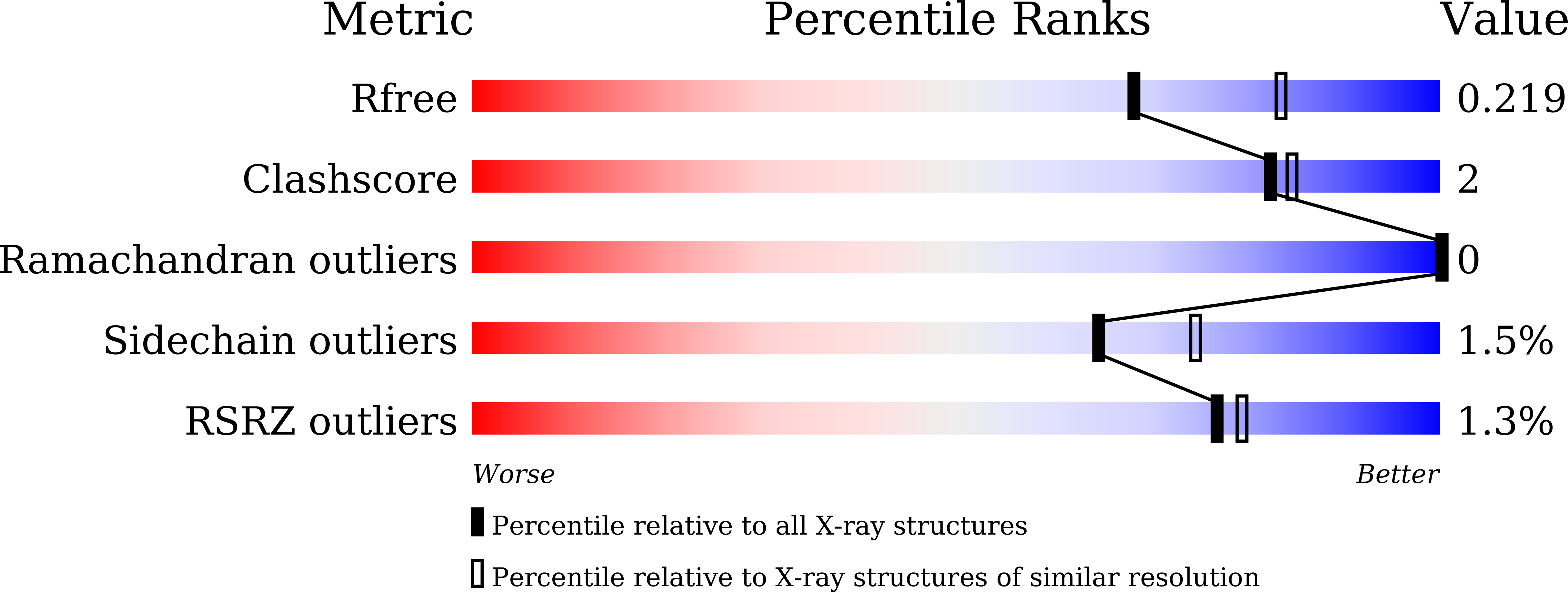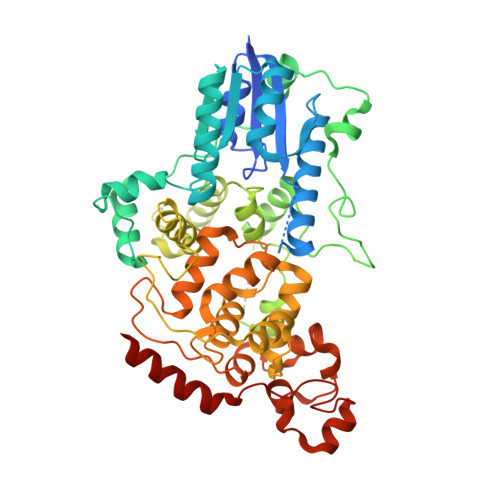Isoform-selective regulation of mammalian cryptochromes.
Miller, S., Son, Y.L., Aikawa, Y., Makino, E., Nagai, Y., Srivastava, A., Oshima, T., Sugiyama, A., Hara, A., Abe, K., Hirata, K., Oishi, S., Hagihara, S., Sato, A., Tama, F., Itami, K., Kay, S.A., Hatori, M., Hirota, T.(2020) Nat Chem Biol 16: 676-685
- PubMed: 32231341
- DOI: https://doi.org/10.1038/s41589-020-0505-1
- Primary Citation of Related Structures:
6KX4, 6KX5, 6KX6, 6KX7, 6KX8 - PubMed Abstract:
CRY1 and CRY2 are essential components of the circadian clock controlling daily physiological rhythms. Accumulating evidences indicate distinct roles of these highly homologous proteins, in addition to redundant functions. Therefore, the development of isoform-selective compounds represents an effective approach towards understanding the similarities and differences of CRY1 and CRY2 by controlling each isoform individually. We conducted phenotypic screenings of circadian clock modulators, and identified KL101 and TH301 that selectively stabilize CRY1 and CRY2, respectively. Crystal structures of CRY-compound complexes revealed conservation of compound-binding sites between CRY1 and CRY2. We further discovered a unique mechanism underlying compound selectivity in which the disordered C-terminal region outside the pocket was required for the differential effects of KL101 and TH301 against CRY isoforms. By using these compounds, we found a new role of CRY1 and CRY2 as enhancers of brown adipocyte differentiation, providing the basis of CRY-mediated regulation of energy expenditure.
Organizational Affiliation:
Institute of Transformative Bio-Molecules, Nagoya University, Nagoya, Japan.















